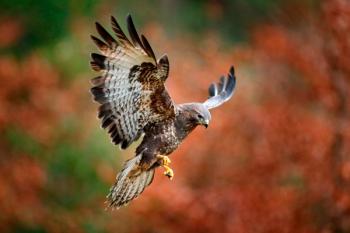
A guide to finding foxtails
Dr. Allison Zwingenberger provides guidelines for identifying foxtails in dogs.
Every year, we see animals presenting with clinical signs related to migrating foreign bodies, most commonly grass awns. The signs can be varied, from respiratory distress to granulomas and multi-organ involvement.
Image 1: The dog had a pharyngeal abscess, visible as a soft-tissue swelling on a lateral radiograph of the neck.
The species of grass awn varies across the United States, with Hordeum common in the west, Stipa and Seteria in the south, and Avena reported in parts of Europe. Foxtails are the common name for the grass awns seen in the Western United States. They are sharp enough to enter tissue and have barbs that cause them to migrate in one direction if they enter the body. Working dogs with long hair and opportunity to come in contact with grass awns are most commonly affected.
Oral cavity
Dogs may encounter grass awns as they travel through long grass while open mouth breathing. The sharp barbs can become lodged in the pharyngeal area and migrate into the soft tissues of the neck. Patients usually have signs such as gagging, coughing and swelling of the face and neck. An oral examination can reveal some of these foreign bodies, but radiographs can help to define the extent of tissue involvement (Image 1). Ultrasound may also be helpful in locating the foreign body if it is in the neck region.
Image 2: Pneumothorax, pleural effusion and an alveolar pattern are common findings on thoracic radiographs.
Thorax
Some of the most severe clinical signs occur when the grass awns are inhaled into the airways. The patient can produce signs of coughing and respiratory distress. A foreign body located in an airway causes local inflammation and pneumonia. They can also migrate outwards to the pulmonary parenchyma and pleural space, causing pyothorax and pneumothorax (Image 2). Foxtails originating from the lungs have also been found in the mediastinum, the thoracic wall, the retroperitoneal space and lumbar musculature.
Radiographs are a good starting point to define the cause of respiratory signs. Common radiographic signs of inhaled foreign bodies include pneumothorax, pleural effusion, focal pleural thickening and alveolar pattern. One or several of these signs may be present in a given case. In animals that have recent or only airway-associated foxtails, there may be no radiographic changes. CT is a very useful adjunct to radiographs, in order to locate all of the areas of suspected or confirmed foreign body prior to surgery or endoscopy.
Image 3: Grass awns appear oval and hyperechoic on ultrasound with a surrounding hypoechoic granuloma.
Limbs
Foxtails are commonly found embedded in the soft tissues of the distal limbs. Ultrasound is the primary method of imaging diagnosis and does an excellent job of localizing the foreign body prior to surgery. The granuloma may be extensive depending on how far the foxtail has migrated after entry. This tissue appears very hypoechoic on ultrasound (Image 3), and a tract with gas echoes may or may not be visible. The foxtail itself should appear oval in shape and hyperechoic. It may also be surrounded by anechoic fluid.
In cases of suspected migrating foreign body, choose the most appropriate imaging modality for the presenting clinical signs. More than one may be needed in some cases to determine the extent of the pathology and to locate the foreign body for removal.
Dr. Zwingenberger is a veterinary radiologist at the University of California-Davis.
For a complete list of articles by Dr. Zwingenberger, visit
Newsletter
From exam room tips to practice management insights, get trusted veterinary news delivered straight to your inbox—subscribe to dvm360.




